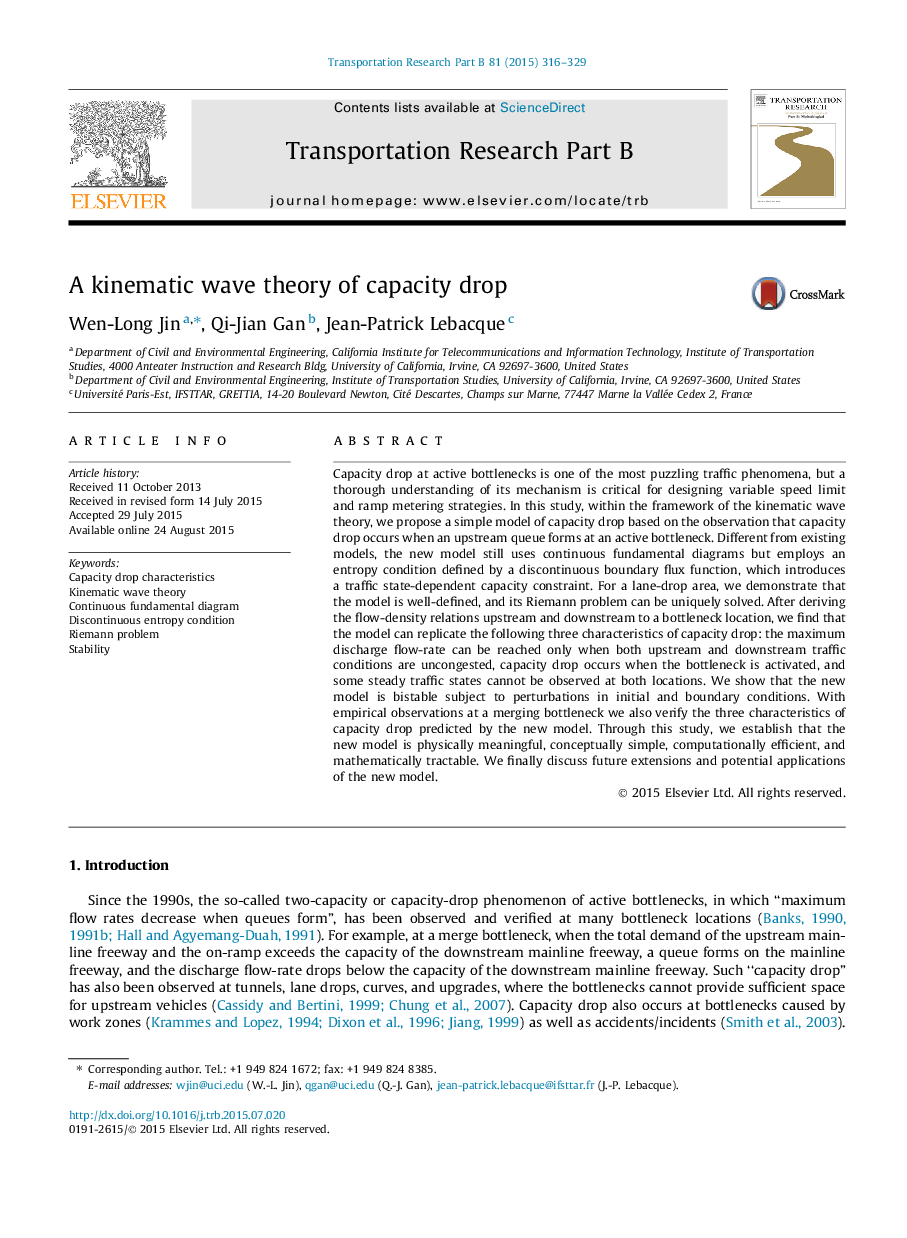| کد مقاله | کد نشریه | سال انتشار | مقاله انگلیسی | نسخه تمام متن |
|---|---|---|---|---|
| 1131683 | 955727 | 2015 | 14 صفحه PDF | دانلود رایگان |
• Capacity drop occurs when upstream demand is greater than downstream supply.
• A discontinuous flux function is used as the entropy condition.
• Some steady traffic states are not observable upstream and downstream to a bottleneck.
• Predictions of the theory are verified by observations.
• The new model reconciles continuous fundamental diagrams with capacity drop.
Capacity drop at active bottlenecks is one of the most puzzling traffic phenomena, but a thorough understanding of its mechanism is critical for designing variable speed limit and ramp metering strategies. In this study, within the framework of the kinematic wave theory, we propose a simple model of capacity drop based on the observation that capacity drop occurs when an upstream queue forms at an active bottleneck. Different from existing models, the new model still uses continuous fundamental diagrams but employs an entropy condition defined by a discontinuous boundary flux function, which introduces a traffic state-dependent capacity constraint. For a lane-drop area, we demonstrate that the model is well-defined, and its Riemann problem can be uniquely solved. After deriving the flow-density relations upstream and downstream to a bottleneck location, we find that the model can replicate the following three characteristics of capacity drop: the maximum discharge flow-rate can be reached only when both upstream and downstream traffic conditions are uncongested, capacity drop occurs when the bottleneck is activated, and some steady traffic states cannot be observed at both locations. We show that the new model is bistable subject to perturbations in initial and boundary conditions. With empirical observations at a merging bottleneck we also verify the three characteristics of capacity drop predicted by the new model. Through this study, we establish that the new model is physically meaningful, conceptually simple, computationally efficient, and mathematically tractable. We finally discuss future extensions and potential applications of the new model.
Journal: Transportation Research Part B: Methodological - Volume 81, Part 1, November 2015, Pages 316–329
